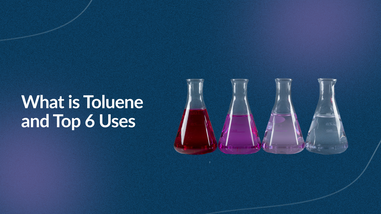- No products in the cart.
Nitric acid, also known as aqua fortis, is a highly corrosive and versatile chemical compound. With its distinctive yellow color, pungent odor, and potent chemical properties, nitric acid finds applications in various industries. In this blog post, we will explore the properties of nitric acid, its common applications, and the crucial safety precautions that must be followed when handling this hazardous substance.
Chemical Properties of Nitric Acid:
Nitric acid is a strong mineral acid with the chemical formula HNO3. It is composed of one hydrogen atom (H), one nitrogen atom (N), and three oxygen atoms (O). Nitric acid is highly soluble in water, and its concentrated form is commonly available with concentrations ranging from 68% to 70%. The acid dissociates in water to produce hydrogen ions (H+) and nitrate ions (NO3-), making it a strong acid.
One of the remarkable properties of nitric acid is its strong oxidizing nature. It is capable of oxidizing a wide range of substances, including metals, organic compounds, and even non-metals. This property makes nitric acid useful in various applications.
Applications of Nitric Acid:
-
Production of Fertilizers: Nitric acid plays a crucial role in the production of fertilizers, specifically ammonium nitrate. By reacting ammonia (NH3) with nitric acid, ammonium nitrate (NH4NO3) is formed. Ammonium nitrate is a widely used nitrogen fertilizer that provides essential nutrients to plants, promoting their growth and yield.
-
Explosives Manufacturing: Nitric acid is a key ingredient in the production of explosives, particularly in the manufacturing of dynamite, TNT (trinitrotoluene), and nitroglycerin. Its oxidizing properties and ability to react with organic compounds make it a vital component in explosive formulations.
-
Metal Etching and Cleaning: Due to its strong corrosive properties, nitric acid is employed for metal etching and cleaning applications. It is used to remove rust, scale, and oxides from metal surfaces, preparing them for further treatment or coating. In the electronics industry, nitric acid is used to clean and etch circuit boards.
-
Laboratory Reagent: Nitric acid is commonly used as a laboratory reagent for various purposes. It is utilized in chemical analysis, as a strong acid for titration reactions, and for the preparation of other chemicals such as nitrate salts.
Safety Precautions when Handling Nitric Acid:
Handling nitric acid requires utmost care and adherence to safety precautions due to its corrosive nature. Here are some important safety guidelines to follow:
- Personal Protective Equipment (PPE): When working with nitric acid, always wear appropriate PPE, including safety goggles, chemical-resistant gloves, a lab coat or protective clothing, and closed-toe shoes. This will protect your eyes, skin, and body from direct contact with the acid.
- Proper Ventilation: Nitric acid releases corrosive fumes that can be harmful when inhaled. Ensure you work in a well-ventilated area or under a fume hood to prevent the accumulation of fumes. If ventilation is inadequate, use a respirator approved for acid fumes.
- Storage and Handling: Nitric acid should be stored in a cool, dry, and well-ventilated area, away from sources of heat, ignition, and incompatible substances. Always handle nitric acid containers with care, ensuring they are tightly sealed and labeled correctly to prevent accidental spills or leaks.
- Acid Handling Techniques: When diluting nitric acid, always add the acid to water slowly while stirring. Never add water to nitric acid as it can cause a violent reaction and splattering. The gradual addition of acid to water helps dissipate the heat generated during the dilution process and minimizes the risk of splashing.
- Emergency Preparedness: It is essential to be prepared for emergencies when working with nitric acid. Have a well-equipped safety shower and eyewash station readily available in case of accidental spills or contact with the acid. Familiarize yourself with the proper procedures for handling spills and the use of neutralizing agents.
- Training and Knowledge: Ensure that anyone working with nitric acid is adequately trained and familiar with its properties, hazards, and safe handling procedures. Stay updated on the latest safety protocols and guidelines to minimize risks associated with handling this corrosive substance.
Disposal of Nitric Acid:
Properly dispose of any waste generated from working with nitric acid. Follow local regulations and guidelines for the safe disposal of acid waste. Never dispose of nitric acid down the drain or in regular trash bins.
Remember, nitric acid is a highly hazardous substance, and strict adherence to safety precautions is crucial to ensure the well-being of both individuals and the environment.
Conclusion:
Nitric acid, with its strong oxidizing properties and corrosive nature, finds diverse applications in various industries. From fertilizer production to metal etching and explosives manufacturing, its versatility is undeniable. However, it is of utmost importance to handle nitric acid with caution and follow the necessary safety precautions.
Personal protective equipment, proper ventilation, storage and handling protocols, and emergency preparedness are essential when working with this corrosive substance. By prioritizing safety and adhering to the recommended guidelines, the risks associated with nitric acid can be effectively minimized.
Always remember that safety should never be compromised when handling hazardous chemicals like nitric acid. By staying informed, trained, and vigilant, we can ensure a safe working environment while harnessing the potential of this versatile chemical compound.
For over 40 years, Lab Pro Inc. has been committed to delivering highest quality chemicals such as nitric acid, lab supplies, hand tools, lab equipment, reagents, distance learning kits, and cleanroom PPE apparel. Renowned by global medical device companies and laboratories, we ensure exceptional quality in every product. Contact us online or call 888-452-2776 to learn more. Discover top-notch lab supplies and elevate your experiments today!











































